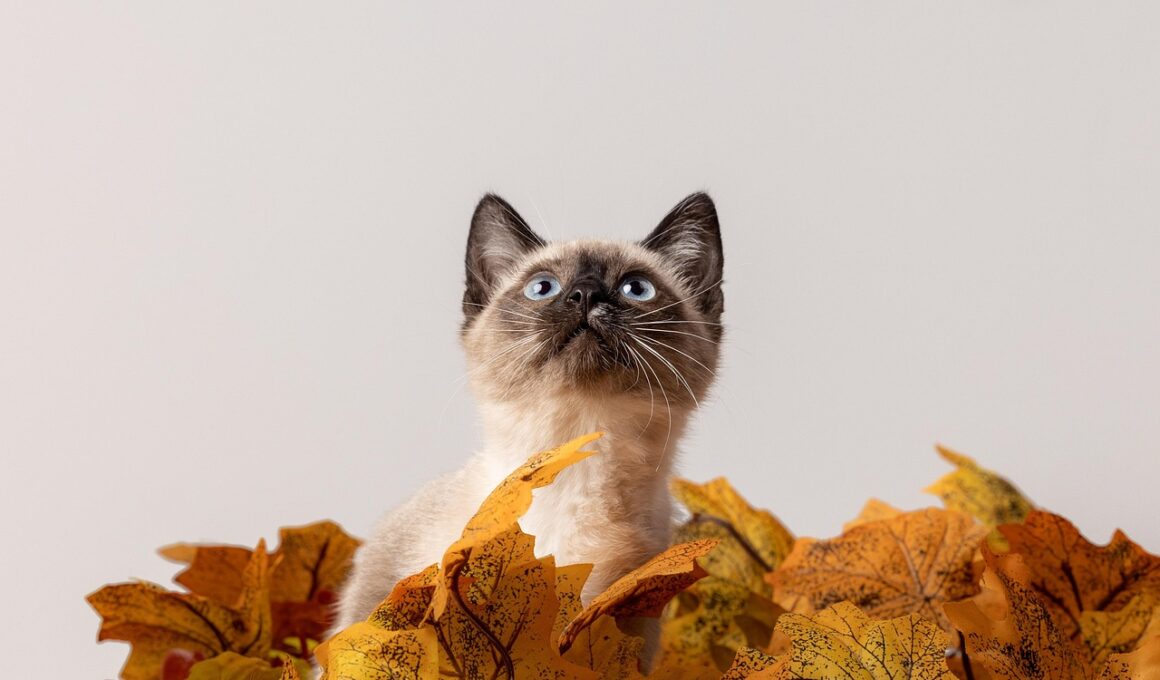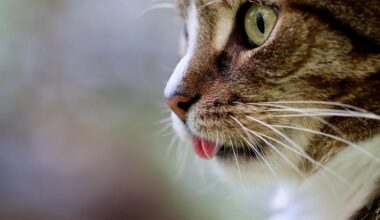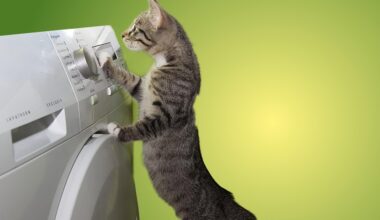Managing Multi-Cat Households in Rescue Situations
Managing multiple cats in a home designed to provide refuge can present a unique set of challenges. When rescuing cats, understanding their specific needs and behaviors is crucial for ensuring a harmonious environment. First, it is important to assess the backgrounds of each cat to predict potential conflicts. Some cats may have experienced trauma, while others could be more social and outgoing. Establishing a safe space for each cat allows them to acclimatize gradually. Make sure you have ample supplies such as separate litter boxes, food, and water dishes. A general rule is to have one litter box per cat, plus one extra. This helps prevent territorial disputes and reduces stress levels. Regular monitoring of interactions between the cats can help identify any escalating tensions early on. Implementing positive reinforcement strategies is essential for fostering a good relationship among the felines. Treating each cat individually, while also allowing for socialization, can create a healthy balance. Establish routines in feeding and playtime, ensuring that all cats feel secure and valued in their shared environment.
Understanding the dynamics of a multi-cat household in rescue situations is key. Different cats have varied temperaments and backgrounds, which can lead to complications. It is beneficial to introduce new cats slowly to prevent fear or aggression. Use separate rooms for new arrivals initially, allowing for scent exchanges through closed doors. Gradually allowing them to see and smell each other can make the transition smoother. Once they are somewhat familiar, supervised meetings should happen in a neutral space. Positive experiences during these meetings can confirm a sense of safety. Tranquility can be enhanced by using pheromone diffusers, which mimic natural cat scents to create calm and reduce anxiety. Offering vertical spaces, such as shelves or cat trees, gives cats the option to escape or observe from high above. This can reduce stress levels by providing them with a retreat option. Social interactions, like playtime, can also be very effective to improve camaraderie among cats. Engage them with toys they can share, enhancing communication and trust. Regular vet checkups are crucial for monitoring health and exposing any underlying issues that could affect social behaviors.
Health Considerations in Multi-Cat Homes
Health management is an important aspect of maintaining peace in multi-cat households. One must ensure that all cats are vaccinated before introduction to prevent potential health outbreaks. Regular veterinary checkups should be prioritized, particularly for newly rescued cats. This vigilance enables the early detection of illnesses that can quickly spread in close quarters. Spaying and neutering pets not only aids in reducing unwanted litters but also can decrease the occurrence of territorial aggression. Ensure that all cats receive proper nutrition, as well as supplements to support their health. A balanced diet tailored to each cat’s specific health needs will contribute to stronger relationships. Additionally, establishing a clean environment is crucial. Daily cleaning of litter boxes, food dishes, and favorite resting spots can limit diseases and make the cats feel more comfortable. Assessing litter box choices tailored to individual preferences can prevent litter box aversion. It’s beneficial to encourage physical activity as well; offering various toys and climbing structures promotes exercise, which also helps reduce aggression. Keeping health on track through regular vet visits is not just preventive but also ensures continual harmony in a multi-cat home.
Establishing routines for feeding and play can greatly benefit the emotional well-being of all cats involved. Consider feeding your cats simultaneously to minimize competition over food, but ensure that each cat has a designated space. This can help create an atmosphere of security during mealtime. Personalizing feeding with specific preferences allows cats to feel more at ease in their shared space. In tandem with meals, set aside time regularly for interactive play sessions. Toys like feather wands or laser pointers can help divert energy, allowing them to express their natural hunting instincts safely. Observing your cats’ behavior can reveal patterns and preferences. Some cats may prefer solitary interaction over group play; recognizing these traits is vital. Diversifying play methods can accommodate individual personalities while fostering communal engagement. Incorporate various activities, such as puzzle feeders or treat-dispensing toys, to keep their minds stimulated. Interaction through gentle grooming can also strengthen bonds between cats and their human caretakers. This provides comfort, builds trust, and establishes a hierarchical order. Each cat should feel valued, ensuring balanced power dynamics and reducing the likelihood of disputes.
Socialization Techniques for Cats
Socializing cats properly in a rescue environment can significantly minimize stress and conflict, enhancing their overall quality of life. Experts suggest introducing playtime as a primary socialization technique. Utilize several types of toys to see which cats engage more with each other. Clicker training is another effective method to create positive associations. Rewarding desired behaviors with treats or praises encourages friendly interactions among cats. It’s paramount to monitor their body language; signals like ears flattening or hissing can indicate discomfort. Be ready to separate the cats when needed while reinforcing good behavior. Gradually increasing the time spent together provides opportunities for adjustment. Bathe them with positive reinforcement and maintain consistency through rewarding shared play experiences. Creating a daily playtime schedule will help cats anticipate interaction periods. Implementing group feeding techniques can also enhance bonding. Just like humans, cats learn from one another; seeing other cats eat can encourage timid ones to join. Clear boundaries between territories using visual barriers will help alleviate anxiety. Additionally, be patient during the socialization process, as it may take time. Each cat has its unique personality; embracing those differences leads to healthier relationships.
Resource sharing is an important strategy in multi-cat environments. Ensure that there are enough resources available to reduce competition; this includes food, water, litter boxes, and safe spaces. When introducing new resources, such as cat trees or scratching posts, allow each cat access while ensuring that others do not feel threatened. This can help create a sense of security within the environment. If one cat seems particularly dominant, consider providing higher vantage points through shelves. This allows all cats to feel safe without being overshadowed by the dominant partner. Offering variety in resources can also decrease the likelihood of disputes. For instance, different types of litter boxes or feeding stations can cater to diverse preferences among the cats. The method of placing additional food stations in various locations around the house helps reduce rivalry, promoting positive associations. Gradual introduction to these new resources alongside monitoring feline interactions can pave the way for harmony. Positive behaviors should always be encouraged through praise or treats to reinforce amicability. By providing adequate resources throughout the household, you ensure that each cat has its own safe space while maintaining balance in the multi-cat environment.
Conclusion and Long-Term Management
In the long run, successful management of multi-cat households in rescue situations requires ongoing commitment from caregivers. Regularly observing social interactions will help recognize patterns and adjust strategies as needed. Understanding individual personalities of each cat contributes to the long-term management of their relationships. Participation in behavior workshops or consulting with feline behaviorists can also be beneficial, enhancing one’s skillset. Additionally, integrating enrichment activities into their daily lives is essential. Interactive toys and feeding puzzles can keep cats engaged and mentally stimulated, which helps minimize anxiety-related issues. Regular check-ins with all cats ensure they are getting adequate attention and remain comfortable. Incorporate feedback from local feline rescue networks to stay informed about best practices in multi-cat households. Documenting behaviors can also shed light on significant changes and effectively develop tailored management plans. Creating a support network with fellow rescuers offers vital sharing of resources and coping strategies. Ultimately, prioritizing each cat’s emotional and physical well-being will lead to lasting success. A harmonious household can serve as a joyful haven for both rescues and their caregivers.


